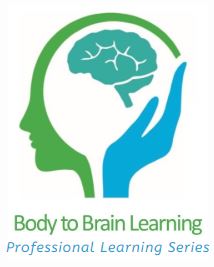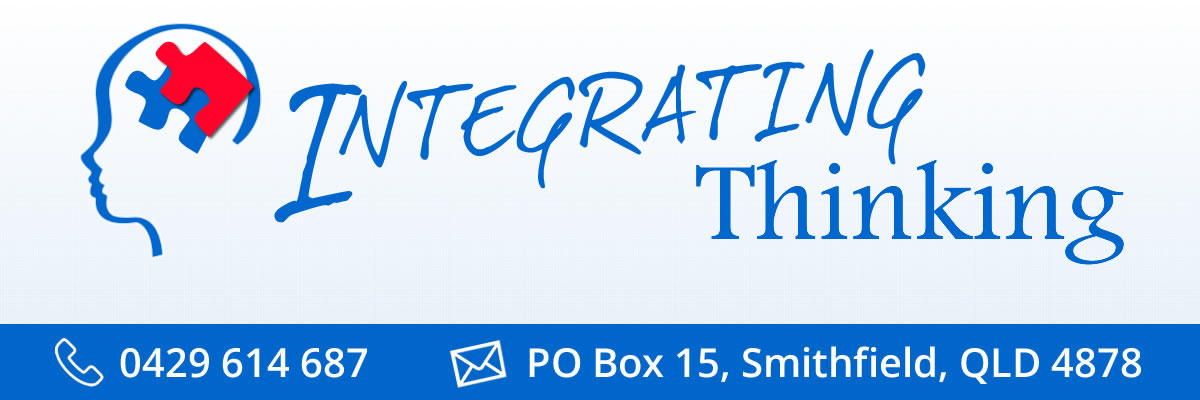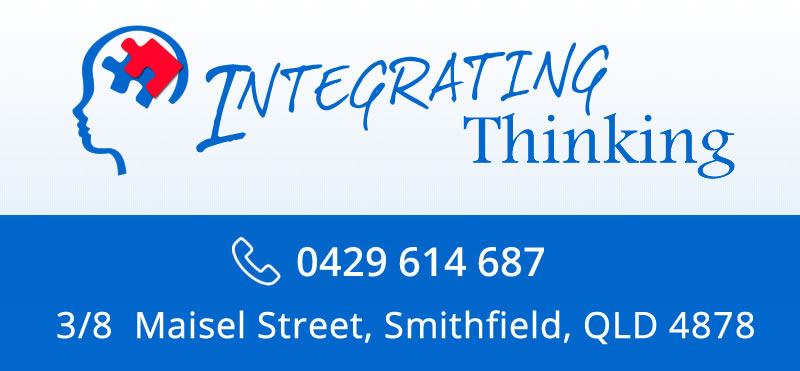How The Body Tells a Learning Story. (Original draft page)
Educators: Can you read the body language of learning? Do you understand the body cues that tell you how your students learn? Can you identify how their body supports their brain in learning activities, and, at times, how their body can actually interfere with their learning?
“How the Body Tells a Learning Story” will help you read and understand the body language of learning your students are showing you every day. It’s a language that tells you HOW your students learn.
HOW your students learn.
This professional learning series is based on the science and processes of neuro-development that underpin the way we learn.
It is designed especially for educators and those who help children learn (support staff and others.)
“How The Body Tells a Learning Story” is an introduction to our Body to Brain Learning (R) approach to teaching, explaining why it is important to include it in your professional toolkit.
I explain how the body helps support learning and how the body helps develop the brain. We know learning is more than a cognitive, head based task — it’s also a body function so let’s understand that better, after all, it’s the body that sets the foundations for how we learn with our brain.
You will gain insight into how to help those students whose bodies (and consequent behaviours) may be getting in the way of their learning.
You will get ideas on how to help the students who may have neuro-motor and sensory immaturity issues that are impacting their learning.
You will learn what to look for and understand why it’s so important for learning success.
“How The Body Tells a Learning Story” is the first in our Body to Brain Learning (R) Professional Development Series. We focus on the clues and cues of your students learning body language. We help you identify what to look for and gain a better understanding of how your students use their body for learning, (and what some of the body-brain learning challenges they may have.)
It’s about cracking the body language code that tells you how the brain and body work together to support learning.
Here’s what some of the teachers have said after finishing our courses:
“Now that I know what to look for in their body learning story, I can respond faster to provide them [my students] with the support they need.”
(Suzanne, a Queensland Pre-School Teacher)
“I feel like I’ve found the key to Aladdin’s Cave!” and “It has changed my way of working… It has changed our school.”
(Carleen, a Victorian Primary School Teacher)
COURSE DETAILS:
Cracking the Body Language Code that Tells Us How the Body & Brain Work Together to Support Learning.
What you will learn:
- how the body supports learning. In particular, I provide an introduction to the neuro-developmental motor and sensory processes that develop naturally in our bodies in the first years of our life, but if they remain immature, they can impact a student’s learning success.
- why neuromotor and sensory systems are crucial for developing and supporting successful academic learning.
- how these body systems develop and work together.
- how the body tells the learning story and
- what cues and clues to look for in your student’s behaviour and learning experiences so you can interpret their learning stories and understand more about HOW they learn.
- how this has impacted professional practice and wellbeing of the teachers who hav
Particular topics we cover include the role of balance, vision, hearing, coordination, movement and neuro-motor immaturity in learning. Once you know how to read the body language of learning your students offer, you can then start to support and address their learning stories in your classroom. I give you information and introduce you to strategies that use principles of neuroplasticity and I tell you where you can learn more.
Why do this?
It’s all about knowing your students and HOW they learn and using that information to improve your teaching practice.
This approach can make a difference in the lives of your students, and in your own professional life.
As a part of this course, you will also hear some teachers tell their story about this body of work and how it has impacted their professional lives.
This is about students of any age that have challenges learning. It isn’t just about prep and early years students.
Short answer: “If the body doesn’t support learning, it can interfere with learning. This course is about helping you understand more about how that connection works.”
Six key topics feature in “How The Body Tells a Learning Story…”
-
- The Role of the Body in Learning (with a particular focus on the neurodevelopmental processes that impact learning success). This includes a basic introduction to what neuromotor and sensory immaturity can look like in a classroom setting and why you need to pay attention to it. (Session 1 is delivered as a free Masterclass so you get an idea of the course content, a recording will be made available to you when you sign up for the course.).
- The Balance and Co-ordination Story. Why are balance and coordination key components of learning success?
- The Vision Story. Vision is more than being able to see clearly. Learning how the eyes work together to help support learning processes can make the difference for a child struggling to learn to read, write, participate in sport etc. What is the vision story in learning success?
- The Hearing Story. What are some of the complexities of hearing that can impact on the learning experiences of students in our classroom? What is the hearing story in the body to brain learning approach? This is more than just being able to hear well.
- The Movement Story. Why do movement and posture contribute to learning success? It’s not about exercise and strength, rather, it’s about how we, as humans, use movement to develop and train our brain for learning. The movement story starts early, but we can enhance those processes at any time in our lives using principles of neuroplasticity.
- The Teacher’s Story. An interview with two Australian teachers who have used the “Body to Brain Learning” approach in their classrooms and schools with fantastic results professionally (increased professional satisfaction), for the students (behaviour and academic results) and for the school in general (“It has changed our whole school.”)
How is the course run?
It’s all on-line.
- Each week, as a participant, you will access a live webinar (45 – 50 minutes on average) with a quick 20 – 30 minute Q & A session after the presentation. These sessions will be recorded and available for a short time for you to watch if you missed the live presentation.
- You will be provided with prompts for triggering thoughts, discussion points and reflection in your class situation that will support your learning. You can use these presentations as an opportunity to take notes and jot down questions to discuss in a subsequent online 1-hour live Q&A session with Dr Christine Payard (PhD), Director of Integrating Thinking(R) and founder of the Body to Brain Learning (R) Professional Learning Series. These Q & A sessions will be held 2 days after the presentations so those who couldn’t make it to the LIVE event can catch up with questions then. (The only presentation that doesn’t definitely have a live Q&A afterwards, is # 6 “The Teacher’s Story”)
- The on-line discussions/tutorials/Q& A sessions offer an opportunity for you to ask questions about your school context, what you see and what it may mean for the students in your classrooms. Group discussions — tapping into the group expertise of participants is a great way to learn and will be encouraged.
- Every session includes practical activities to illustrate the concepts discussed in the presentation so that you gain some insight into the experiences we are talking about in this programme.
- This is where the theory of a neuro-developmental learning approach starts to meet practice in your context.
Aligned to AITSL standards, this course provides you with up to 12 hours of professional learning presentations and conversations that can contribute to continuing professional learning/development records. A certificate of participation can be made available on completion of the course on request.
How the Body Tells a Learning Story articulates with and leads to other professional learning opportunities provided by Integrating Thinking through its Body to Brain Learning® Professional Learning Programmes and affiliate training through INPP Australia.
- is completely on-line.
- is currently scheduled to be delivered 2 times per year and can also be used as a school-based professional learning experience.
- The next course offering starts with a Free Introductory Masterclass on March 30th at 4pm (AEST). See the dates below for the other sessions.
INVESTMENT:
The investment in the FULL professional learning opportunity for an individual teacher is usually $697 AUD per participant (incl GST), but for the first offering in 2021, $397AUD. This provides you with 6 presentations, access to 5 Q& A sessions with Dr Christine Payard (Ph.D) following the sessions, and bonus downloadable resources/material to use in your classrooms. This approach helps you answer questions about what you see in your classroom and using the resources provided for you. You can enrol NOW. Here’s the link:
Take me to the enrolment options page.
Pricing for a school-based group approach can be negotiated, contact: Chris@integratringthinking.com.au for more details.
Enrol now in the complete course: “How The Body Tells a Learning Story…”

KEY DATES 2021:
ENROLMENT CLOSES: Thursday April 22nd.
SESSION 1 is a free Masterclass that was scheduled for March 30th at 4pm AEST (Queensland time) (A recording of this event will automatically be sent to you when you sign up for the rest of this course.)
The rest of this learning story, will be delivered as follows:
Session 2: Tuesday 27th April with a Q & A session 2 days later. (The Balance & Coordination Learning Story).
Session 3: Tuesday 4th May with a Q & A session 2 days later. (The Vision Learning Story).
Session 4: Tuesday 11th May with a Q & A session 2 days later. (The Hearing & Listening Learning Story).
Session 5: Tuesday 18th May with a Q & A session 2 days later. (The Neuromotor Readiness for Learning Story)
Session 6: Tuesday 25th May with a possible Q & A session 2 days later. (The Teacher’s Experience Story).
Take me to the enrolment options page.
BONUS OBSERVATIONAL TOOL:
When you sign up for more information about the next “How The Body Tells a Learning Story…”, we will also send you access to download the “Body to Brain Learning Educator’s Checklist”.
The “Body to Brain Educator’s Checklist” provides you with an observational tool that helps you identify learning cues that indicate there could be a body-based perspective we need to consider for this child’s learning. It’s a way your student may be saying “Hey teacher, my body isn’t helping me here!”
We will discuss how to use the checklist and what to do with the information you gather during the course.
This checklist is the first of the bonus documents and worksheets we offer in “How The Body Tells A Learning Story…” Stay tuned, or, register your interest in this programme now. Enrollments are open now!)
Take me to the enrolment options page.





